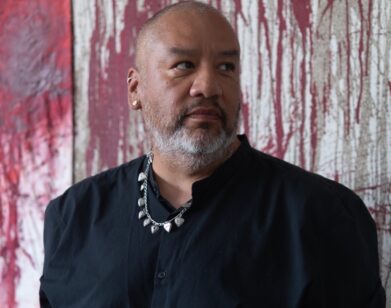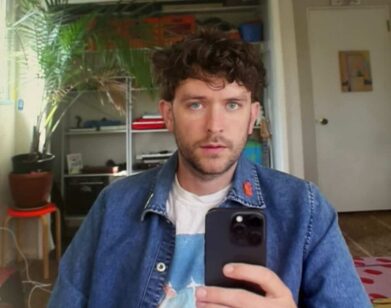Benoit Delhomme
While Glenn Close is currently reprising her role as Norma Desmond, the ultimate faded movie star, in Sunset Boulevard on Broadway, another twisted vision of Hollywood and its dark magic is taking place 20 blocks south. Here, at Daniel Cooney Fine Art in Chelsea, is the site of cinematographer-turned-painter Benoit Delhomme’s first solo show, “My Hollywood,” a body of 23 acrylic paintings inspired by the Paris-based artist’s years on the studio set. “I always felt, when I finished a movie, something was missing,” Delhomme says of his decision to begin painting 20-odd years ago. As the celebrated cinematographer behind, most recently, Free State of Jones, The Theory of Everything, and A Most Wanted Man, as well as scores of commercials, Delhomme spent the better part of his career keeping his film life separate from his painting life—one was guided by precision and order (films), the other by instinct and emotion (paintings). Last year, the lines started to blur. “Suddenly I had so many ideas—all the memories I got from cinema were coming back to me. Sentences I heard on set became poetry in a way,” he explains. “I became more interested in my paintings about cinema than cinema itself.”
Thus, “My Hollywood” was born, a series that attempts to imbue some artful disorder to the manufactured mythology of movies. The paintings are defiantly two-dimensional, sapped of depth, rendered with coarse, spare shapes and washed-out colors—a rebuff to the elaborate shots he makes for film. Most feature sparse lines of text about the industry. “IS MY SOUL MORE PHOTOGENIC” one reads, over a topless female figure, presumably a young actress. In another, a floating head, looking impossibly downtrodden, stares out empty-eyed at the viewer: “SOME PEOPLE CALL IT THE DREAM FACTORY.” “I like the idea of actors being more lonely than people imagine,” Delhomme says. A bitter and funny contradiction—that, too, is Hollywood.







